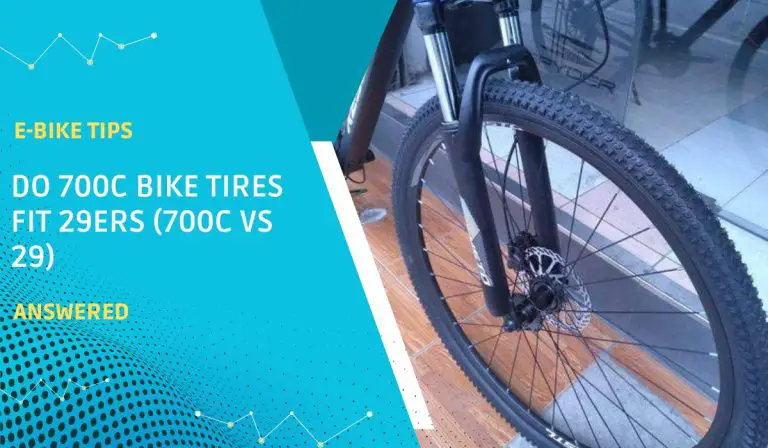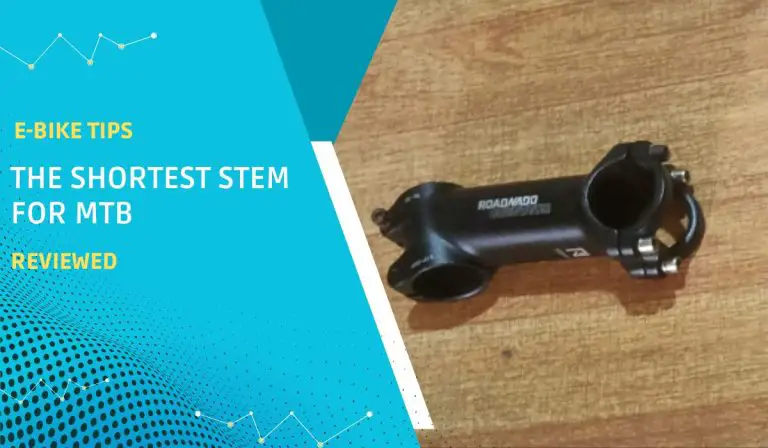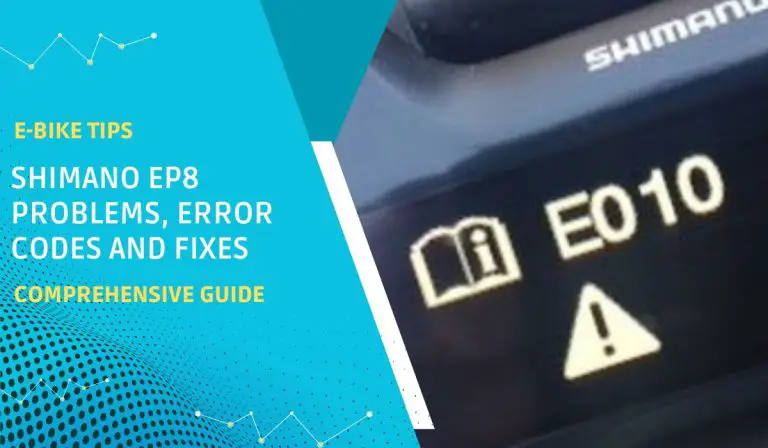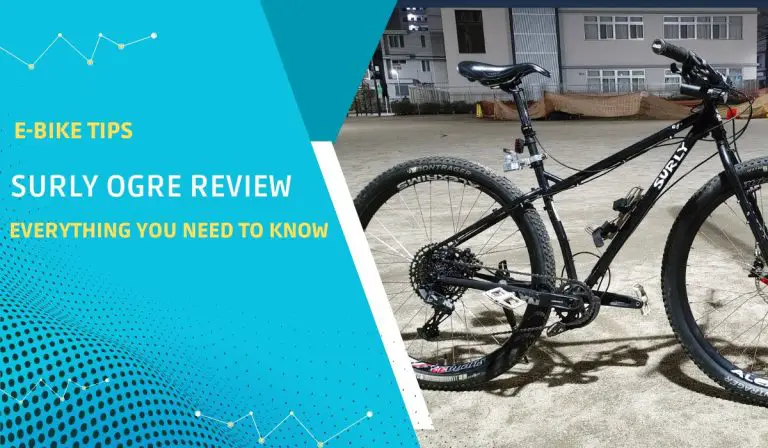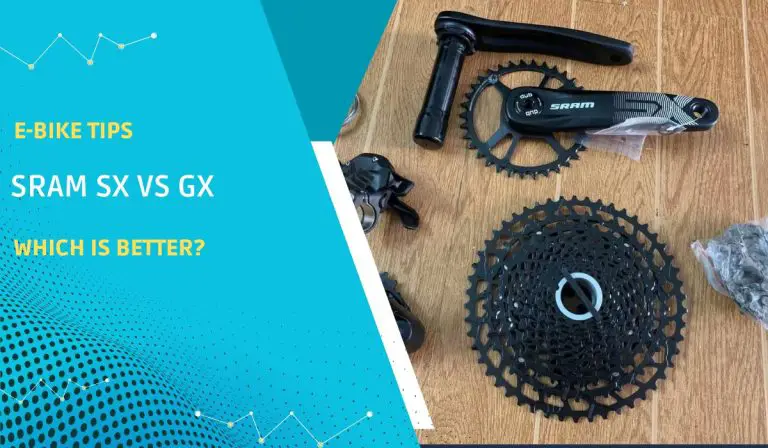Yes, a 700c bike tire will fit a 29-inch rim, as long as they both have the same bead seat diameter. The 700c bike tires and the 29er tires are generally interchangeable. This is because they both have a similar outer diameter of around 29 inches.
In high school, I got this big idea to switch my 29er’s tire with a fancy 700c one. It sounded awesome, like giving my bike a secret upgrade. I was worried it wouldn’t fit, but guess what? It slid right onto the rim like they were meant to be! My bike looked sleeker, and I felt like a pro rider with this upgrade. I took it for a spin, and the ride was smooth on the road. Now I know that a 29-inch tire can be swapped for a 700c and vice versa, provided they have the same outer diameter.
In this article, I will be introducing tire sizing to you and sharing with you the similarities and differences, comparability, and things to consider when punching from either a 700c or a 29er. I’m here to be your guide throughout this article, so sit tight and let’s begin!
Skip To Section Here
Tire sizing and measurement
Tire sizing is a key part of biking, shaping how well a tire fits on your bike’s rim. It’s all about two main things: diameter and width. The diameter is the size of the tire’s outer edge, measured in inches, like 700c or 29er. And then there’s the width, which is the distance from one side of the tread to the other.
Now, here’s where it gets exciting. The diameter directly affects how you perform on your bike. A bigger diameter means smoother rides over rough spots, while a smaller one gives you better acceleration and handling on smoother surfaces.
When it comes to biking, you’ve got these two cool options: 700c and 29er tires. The 700c is like your road buddy, perfect for city rides and racing with its slim build and larger diameter. Meanwhile, the 29er is your trail companion, built for mountain biking with its bigger diameter that helps you tackle tough terrain.
People love both of these tire types for a reason. If you’re all about speed and smooth roads, the 700c tires are your jam. But if you’re into off-road adventures and rough trails, the 29er is calling your name.
700c vs. 29
| Spec | 700c | 29er |
| Outside diameter | 700mm | 735mm |
| Rim width | 19-25mm | 21-29mm |
| Tire width | 23-35mm | 25-2.5″ |
| Rolling resistance | Lower | Higher |
| Speed | Faster | Slower |
| Handling | More nimble | Less nimble |
| Comfort | Less comfortable | More comfortable |
| Traction | Less traction | More traction |
Both 700c and 29er tires might seem close in size because they’re both around 29 inches in diameter. But here’s the difference: 700c tires are a bit narrower compared to the 29er ones. That means they’re designed to be sleeker and faster on smooth roads.
When it comes to ride quality, tire width and rim compatibility are like a dynamic duo. The width affects how comfortable your ride feels and how well your bike grips the road or terrain. But hold on, there’s more! The rim—yeah, that’s the metal part your tire attaches to—plays a role too.
Matching the right width with the right rim is the secret sauce. A wider rim pairs well with a wider tire, giving you more stability and traction. On the other hand, a narrower rim and tire combo work together for a more aerodynamic ride.
Below is a table clearly showing the similarities between 700c tires and 29er tires:
| S/N | SIMILARITIES | DIFFERENCES |
| 1. | 700c tires are slimmer and designed to tackle smooth roads with less rolling resistance. Meanwhile, 29er tires have a wider stance, making them ideal for gripping uneven terrain and handling obstacles. | 700c tires are a bit slimmer and designed to tackle smooth roads with less rolling resistance. Meanwhile, 29er tires have a wider stance, making them ideal for gripping uneven terrain and handling obstacles. |
| 2. | They look similar in size at first glance due to their comparable diameter. | 700c tires are mainly for city streets and pavement, while the 29er tires are mainly for mountain biking. |
| 3. | – | 700c tires often pair with narrower rims, while 29er tires find their match with wider rims. |
Compatibility Tests from Other Users
According to other users and experts on social media and bike communities and forums, the 700c and 29er tires are basically the same thing.
Below is a pictorial represents of what some of them think:
Experts and users from Quora:
From a pro member on BMX Museum:
An expert on Reddit:
Considerations for Optimal Performance
Here are some factors for optimal performance: When it comes to choosing the right tire for your biking needs, five key factors play a vital role: terrain, riding style, tire pressure, manufacturer guidelines, and expert opinions. These elements act as your guide, leading you towards a choice that enhances your biking experience.
Terrain Consideration
Think about where you’ll be riding the most. If you’re cruising on smooth city roads, consider 700c tires for their speed and efficiency. If trails and uneven terrain are more your style, 29er tires are built for that off-road adventure.
Riding style matters.
Your riding style is your signature on the road or trail. For urban riders who love quick acceleration and smooth rides, 700c tires are for you. For those seeking stability and traction on trails, 29er tires are designed for rugged exploration.
Tire Pressure Tips
Tire pressure might sound boring, but it’s your ticket to a comfy ride. Higher pressure in 700-c tires minimizes rolling resistance and boosts speed on smooth surfaces. On the flip side, lower pressure in 29er tires provides grip and cushion on bumpy terrain.
Manufacturer Guidelines
Think of manufacturer guidelines as your trusted co-pilot on this journey. They’re not just suggestions; they’re a blueprint crafted by the people who know their tires inside out. These guidelines provide insights into the right rim width, tire pressure range, and optimal performance conditions. Ignoring them is like skipping a key chapter in a book—you might miss out on the best parts.
Expert Opinions
Biking enthusiasts and experts are like your personal bike advisors. They’ve been on the trails, roads, and tracks, and they’ve tried and tested different combinations. Their experience is a treasure trove of wisdom. Consulting experts or engaging in biking communities lets you tap into real-world knowledge.
When to Choose Between the 700c and the 29er
If your heart thrives on the rhythm of city streets and the idea of zipping through urban landscapes resonates with you, then 700c tires are tailor-made for you. These tires excel on smooth city streets, owing to their narrow build and efficient design. They minimize rolling resistance, offering you a ride that’s both smooth and delightfully speedy. Additionally, if road racing is your passion, 700c tires are the high-performance choice that offers aerodynamics and responsiveness, just like a pair of sleek racing shoes.
For those whose biking dreams take them off the beaten path and into the world of off-road adventure, 29er tires are the companions you need. These tires truly shine when it comes to conquering rugged trails and rough terrain. With their larger diameter, they grant you the stability and traction necessary to navigate uneven landscapes with confidence. Furthermore, if mountain biking is your calling, 29er tires are your trailblazers, offering enhanced control and grip on dirt paths, rocky trails, and even through mud.
Alternative to the 700c and 29er—the 650b
Looking beyond the 700c and 29er tires, the 650b tire stands as a versatile hybrid, offering a balanced blend of agility and adaptability. The 650b tire finds its sweet spot with a diameter that strikes a balance between the larger 29er and the classic 700c.
It’s not too big or too small; it’s just right. This middle-ground diameter enables a ride that marries the nimble qualities of the 700c with the adventurous spirit of the 29er. It’s a tire that caters to the versatile rider who craves both speed and off-road prowess.
Conclusion
Our exploration of 700c and 29er tires underscores that the right choice is a gateway to biking greatness. Your decision hinges on terrain and style. Urban streets favor 700c finesse, while 29er mastery conquers off-road challenges. But it’s not just about performance—it’s about safety and joy.
I hope I have been able to convince you with the answers and guidelines I shared with you in this article.
Your tire is more than rubber; it’s your partner in biking tales. It’s the fine line between a ride and an adventure, between a spin and cherished memories.
Thanks for reading!
FAQs
What constitutes a 700C tire?
A 700-c tire is characterized by an internal diameter of 622mm. Equally essential is the bead seat diameter, a critical factor in ascertaining the compatibility of your tire with the rim. You’ll typically find the ISO sizing indicated on the tire’s sidewall, resembling something like 27 (bead seat diameter)-622 (internal diameter): 27-622.
Which is a better option between the 700C and the 29er?
The choice between 700c and 29er tires comes down to your biking preferences and intended terrain.
Why is it called a 29er?
It is called a 29er because it is a 29-inch wheeled bike.

